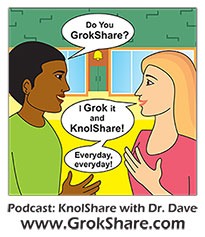E79: Finding Your Engagement Sweet Spot During COVID-19
E79: Finding Your Engagement Sweet Spot During COVID-19
By: Dr. Dave Cornelius
Finding your engagement sweet spot in this turbulent, uncertain, novel, and ambiguous (TUNA) environment is ”wicked-hard”. I have inserted the Bostonian ”wicked-hard” colloquialism as I reflect on a previous weekly commute from the West to the East Coast for a customer engagement. People in the office would often use ”wicked-hard” to describe some of the technological and people collaboration challenges. I view people engagement in two categories that include 1) social engagement and 2) execution engagement. It is estimated that the lack of engagement cost organizations approximately $550B in productivity loss each year. That is a lot of productivity loss.
One question that I pose to agile, business, and executive coaches is what people and teams are missing because they are remote. Recently, I spoke with a few agile coaches and they agree that social (casual) conversation is a key experience that is limited. The ability to walk over to your colleague for a casual talk about sports, the kids, politics (no, not that!), and advice is now harder than ever. A few of the experiences shared by the coaches to compensate for our distance were 1) teams are leaving open Slack channels to signal impromptu virtual meetups, 2) book clubs, and 3) virtual social events for happy hour and parties. I would invite us to also practice the core protocol of “freedom” and allow our team members to “Check out” without judgement, explanation, or drama. Each individual should be able to say , “I’m checking out”. The benefit of creating social engagement while we are virtual will continue to help us build community and develop beneficial cultural experiences.
Beyond the social interaction between team members, we should not lose sight of the execution engagement that produces value for the organization. In my coaching practice, I use a qualitative survey to help team members understand the level of engagement by probing the following:
- Understands the customer requests
- Takes initiative to lead without being asked
- Recommends solutions to problems and provide innovative ideas
- Contributes to technical and other conversations
- Meets Say – Do (Stories planned vs Stories done)
- Supports Dependent Team(s)
We apply the 360-feedback model that help team members use a blind selection practice to randomly provide feedback to each other. Team members receive confidential and anonymous feedback from peers and others on cross functional teams who may also contribute. The survey responses are measured using the following value ranges:
- 80%-100% - support the team’s focus to excel
- 60%-79% - monitor the patterns observed, influence to grow
- 59% and below – seek to understand and coach toward improvement
This model helps to build trust between the team members. The frequency of this event usually take place every two or three months. High-performing people contribute to high-performing teams and the work of leaders will be to create transparent methods that influence aspiration and engagement in this global pandemic.
Learn more by visiting www.knolshare.org
Music by: Kayanna Brow-Hendrikson
Copyright 2020 KnolShare and Dr. Dave Cornelius
Until next time, Be well, stay safe, and connect soon.
Podcast (ks_dd): Play in new window | Download (Duration: 4:38 — 8.7MB) | Embed
Subscribe: Apple Podcasts | RSS
